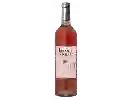
Château de NagesVieilles Vignes Blanc Costières de Nîmes
This wine is a blend of 3 varietals which are the Bourboulenc, the Clairette and the Roussanne.
In the mouth this white wine is a powerful with a nice freshness.
This wine generally goes well with pork, poultry or rich fish (salmon, tuna etc).
The Vieilles Vignes Blanc Costières de Nîmes of the Château de Nages is in the top 5 of wines of Costières-de-Nîmes.
Taste structure of the Vieilles Vignes Blanc Costières de Nîmes from the Château de Nages
Light | Bold | |
Dry | Sweet | |
Soft | Acidic |
In the mouth the Vieilles Vignes Blanc Costières de Nîmes of Château de Nages in the region of Rhone Valley is a powerful with a nice freshness.
Wine flavors and olphactive analysis
On the nose the Vieilles Vignes Blanc Costières de Nîmes of Château de Nages in the region of Rhone Valley often reveals types of flavors of pineapple, cream or grapefruit and sometimes also flavors of oaky, tropical or citrus.
Food and wine pairings with Vieilles Vignes Blanc Costières de Nîmes
Pairings that work perfectly with Vieilles Vignes Blanc Costières de Nîmes
Original food and wine pairings with Vieilles Vignes Blanc Costières de Nîmes
The Vieilles Vignes Blanc Costières de Nîmes of Château de Nages matches generally quite well with dishes of pork, rich fish (salmon, tuna etc) or mature and hard cheese such as recipes of alsatian sauerkraut, half-cooked bluefin tuna or pasta gratin with mortau sausage.
Details and technical informations about Château de Nages's Vieilles Vignes Blanc Costières de Nîmes.
Discover the grape variety: Bourboulenc
Bourboulenc is mainly grown in the southern part of France. It is a white grape variety that ripens quite late. It can only be harvested around 25 September and for an average of only one month. Bourboulenc is particularly fond of low-lying, but at the same time warm and dry locations. The aroma of this grape variety is not very pronounced, but it has a certain exotic fruit and floral aroma such as broom. The result is a low alcohol wine with subtle and fleeting aromas. Blanquette, bourboulanc, bourboulenque, doucillon, clairette dorée and clairette blanche are all names that can designate bourboulenc. This grape variety is very sensitive to diseases common to all vine plants such as magnesium deficiency, mildew and oidium. Bourboulenc can be used as a table grape. Most French people keep the bunches until Christmas in order to present them on the festive table as desserts.
Last vintages of this wine
The best vintages of Vieilles Vignes Blanc Costières de Nîmes from Château de Nages are 2018, 2017, 2013, 2016 and 2015.
Informations about the Château de Nages
The Château de Nages is one of of the world's greatest estates. It offers 21 wines for sale in the of Costières-de-Nîmes to come and discover on site or to buy online.
The wine region of Costières-de-Nîmes
The wine region of Costières-de-Nîmes is located in the region of Rhône méridional of Rhone Valley of France. Wineries and vineyards like the Domaine Scamandre or the Château d'Or et de Gueules produce mainly wines red, pink and white. The most planted grape varieties in the region of Costières-de-Nîmes are Mourvèdre, Roussanne and Viognier, they are then used in wines in blends or as a single variety. On the nose of Costières-de-Nîmes often reveals types of flavors of non oak, thyme or raisin and sometimes also flavors of clove, cocoa or coffee.
The wine region of Rhone Valley
The Rhone Valley is a key wine-producing region in Southeastern France. It follows the North-south course of the Rhône for nearly 240 km, from Lyon to the Rhône delta (Bouches-du-Rhône), near the Mediterranean coast. The Length of the valley means that Rhône wines are the product of a wide variety of soil types and mesoclimates. The viticultural areas of the region cover such a distance that there is a widely accepted division between its northern and southern parts.
The word of the wine: Tressallier
White grape variety from the Allier region, identical to the Sacy variety grown in Burgundy. Rarely vinified on its own, it is used in the blending of Saint-Pourçain white wines, associated with chardonnay, the main grape variety of the appellation. Syn.: sacy.














